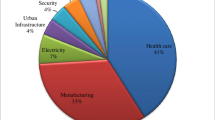Abstract
Nowadays, information and communication technologies are widely used in e-health to deliver services. The most popular communication choice is the Internet, as it offers cheap and worldwide coverage. However, as the technologies grow, the threats also grow in parallel. The threats put the patient’s privacy at risk. Therefore, it is important to make sure that security technologies can cater for the privacy and security needs, whenever communications occur through the Internet. This paper presents a multi-agent based security framework for e-health services. The actors and the type of communications are described and a multi-level communications for the users is introduced. The security requirements and the multi-agent based security approach are modeled and presented in the framework.
Access this chapter
Tax calculation will be finalised at checkout
Purchases are for personal use only
Preview
Unable to display preview. Download preview PDF.
Similar content being viewed by others
References
Gordon, L.A., Loeb, M.P., Lucyshyn, W., Richardson, R.: Computer Crime and Security Survey (2006) (retrieved on October 1st, 2006), Link www.gocsi.com
Eysenbach, G.: What is e-health? J. Med. Internet Res. 3(2), 20 (2001)
Joseph Wen, H., Tan, J.: The Evolving Face of TeleMedicine & E-Health: Opening Doors and Closing Gaps in E-Health Services Opportunities & Challenges. In: Proceedings of the 36th Annual Hawaii International Conference on System Sciences (HICSS’03) (2003)
Cowan, D., Turner-Smith, A.: The role of assistive technology in alternative models of care for older people. In: Royal Commission on Long Term Care. With respect to old age: research, London Stationery Office (Cm 4192-II/2), vol. 2 (1999)
Scanlon, W.G.: Using wireless technology to develop an effective personal telemedicine service. Centre for Communication Engineering, University of Ulster (2000), Link http://www.cyberfab.net/Documents/EMS/univulsterGSM.pdf
Mitchell, J.: From Telehealth to E-health: The Unstoppable Rise of E-health. John Mitchell & Associates for the Federal Australian Department of Communications, Information Technology and the Arts (DOCITA) (1999)
Shou, L.L., Gingrich, D., Lewis, P.R., Mauger, D.T., George, J.H.: Enhancing Doctor-Patient Communication Using Email: A Pilot Study. The Journal of the American Board of Family Practice 18, 180–188 (2005)
Couchman, G.R., Forjuoh, S.N., Rascoe, T.G.: E-mail Communications in Family Practice What Do Patients Expect? Journal of Famaliy Practice 50, 414–418 (2001)
Liederman, E.M., Zimmerman, E.M., Athanasoulis, M.A., Young, M.A.C.: Systemwide rollout of doctor-patient secure web messaging: The university of california, davis, virtual care experience. In: Whitten, P., Cook, D. (eds.) Understanding health communication technologies, 1st edn., pp. 244–250. A Wilery Imprint, San Francisco Jossey-Bass (2004)
Pagliari, C., Donnan, P., Morrison, J., Ricketts, I., Gregor, P., Sullivan, F.: Adoption and perception of electronic clinical communications in Scotland. Informatics in Primary Care 13(2), 97–104 (2005)
Tang, P., Black, W., Buchanan, J., Young, C., Hooper, D., Lane, S., Love, B., Mitchell, C., Smith, N., Turnbull, J.: PAMFOnline: Integrating EHealth with an Electronic Medical Record System. In: Proceedings of the American Medical Informatics Association Annual Symposium, pp. 649–653 (2003)
Jennings, N.R., Sycara, K., Wooldridge, M.: A roadmap of agent research and development. Autonomous Agents and Multi-Agent Systems 1(1), 7–38 (1998)
Sharma, D., Ma, W., Tran, D.T.: On an IT Security Framework. In: Khosla, R., Howlett, R.J., Jain, L.C. (eds.) KES 2005. LNCS (LNAI), vol. 3681, pp. 226–232. Springer, Heidelberg (2005)
Bleumer, G.: Security of decentralized health information systems. International Journal of Biomed. Comp., 139–145 (February 1994)
Panko, R.R.: Corporate Computer and Network Security. Prentice Hall, Upper Saddle River, New Jersey (2003)
Author information
Authors and Affiliations
Editor information
Editors and Affiliations
Rights and permissions
Copyright information
© 2007 Springer-Verlag Berlin Heidelberg
About this paper
Cite this paper
Sulaiman, R., Sharma, D., Ma, W., Tran, D. (2007). A Multi-agent Security Framework for e-Health Services. In: Apolloni, B., Howlett, R.J., Jain, L. (eds) Knowledge-Based Intelligent Information and Engineering Systems. KES 2007. Lecture Notes in Computer Science(), vol 4693. Springer, Berlin, Heidelberg. https://doi.org/10.1007/978-3-540-74827-4_69
Download citation
DOI: https://doi.org/10.1007/978-3-540-74827-4_69
Publisher Name: Springer, Berlin, Heidelberg
Print ISBN: 978-3-540-74826-7
Online ISBN: 978-3-540-74827-4
eBook Packages: Computer ScienceComputer Science (R0)




